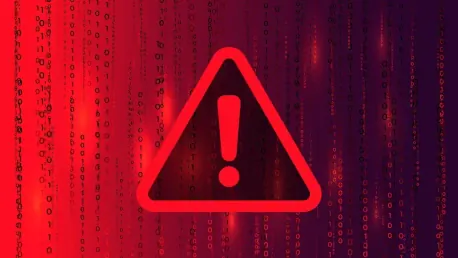In a concerning development, DAP Health and its subsidiary Borrego Health have reported a potential data privacy breach. The breach was initially detected earlier this year, raising significant concerns about the security of sensitive patient information. Delving into the details of this breach, it becomes clear that the response from DAP Health and the measures being taken to mitigate the impact on affected individuals are essential topics of discussion.
Discovery of the Breach
Initial Detection and Response
On July 22, 2024, DAP Health’s systems flagged suspicious activity within its email environment, prompting immediate action. Recognizing the potential severity of this issue, DAP Health swiftly enlisted the expertise of a third-party cybersecurity firm in conjunction with their own IT personnel. The goal was to promptly secure their systems and undertake a thorough forensic analysis to ascertain the scope and impact of the breach.
Responding with urgency and precision, DAP Health’s decision to collaborate with external cybersecurity experts was crucial in their effort to contain the breach. The comprehensive investigation launched aimed to identify the specific nature of the suspicious activity and any potential vulnerabilities within the email system. This swift and proactive response underscored DAP Health’s commitment to safeguarding patient information and ensuring the integrity of their systems against unauthorized access.
Forensic Analysis and Findings
The subsequent forensic analysis revealed a concerning reality: an unauthorized entity had successfully accessed or obtained specific files and data housed within DAP Health’s email system. Recognizing the gravity of this breach, DAP Health took steps to communicate the details of the incident through an official press release. This method of communication emphasized the organization’s transparency in addressing the issue and their dedication to assisting those potentially impacted by the incident.
The findings of the forensic analysis prompted DAP Health to implement additional security measures to protect against future breaches. By publicly disclosing the breach and outlining their response strategies, DAP Health aimed to maintain trust and reassure patients that their security concerns were being taken seriously. The organization’s transparency and proactive communication demonstrated a strong commitment to addressing the breach’s implications and preventing similar incidents in the future.
Impact on Sensitive Information
Data Reconstruction and Review Process
In the wake of the breach discovery, DAP Health initiated an extensive and time-intensive data reconstruction and review process to identify individuals whose sensitive information had been compromised. This meticulous process was essential in ensuring that every affected individual was accurately pinpointed and informed about the breach. By November 26, DAP Health successfully completed this process, revealing that a wide array of sensitive information had potentially been exposed.
The exposed information included personal identifiers such as names, addresses, phone numbers, dates of birth, social security numbers, patient IDs, and extensive medical information. The thoroughness of the review process demonstrated DAP Health’s commitment to transparency and accuracy in addressing the breach. Identifying the scope of the compromised data was a critical step toward implementing appropriate measures to mitigate the breach’s impact on affected individuals.
Types of Exposed Data
The breach resulted in the exposure of various types of sensitive data, which heightens the risk of identity theft and fraud for the affected individuals. Among the compromised data were details not just limited to personal identifiers but also encompassing medical information such as treatment details, diagnosis, and medical history. This level of comprehensive exposure underscores the severity of the breach and the potential for significant harm to the impacted individuals.
The depth and breadth of the exposed data necessitate an equally comprehensive response to protect affected individuals. DAP Health’s transparency in communicating the types of data compromised highlights the importance of providing adequate support to those at risk. By understanding the specific types of information exposed, affected individuals can take more informed steps to safeguard their identities and personal information against potential misuse or exploitation.
Support and Resources for Affected Individuals
Communication and Assistance
In response to the breach, DAP Health has been proactive in communicating with the individuals potentially affected by the incident. Those who received notification letters can seek further clarification or confirm their status by contacting DAP Health’s dedicated assistance line at 833-799-4324. This line is operational from 8:00 a.m. to 8:00 p.m. ET, Monday through Friday, except on major U.S. holidays, ensuring affected individuals have access to timely support.
DAP Health’s communication efforts aim to provide clarity and support to those impacted by the breach. By offering a dedicated assistance line, they ensure that affected individuals can easily gain the information they need to address their concerns. This proactive approach demonstrates DAP Health’s commitment to assisting patients in navigating the potential consequences of the breach and taking necessary steps to protect their personal information.
Monitoring and Preventive Measures
DAP Health strongly advises individuals to remain vigilant against identity theft and fraud by meticulously reviewing account statements, explanation of benefits forms, and monitoring free credit reports for any suspicious activities or inaccuracies. Under U.S. law, every individual is entitled to an annual free credit report from each of the three major credit reporting agencies. Individuals can obtain this report by visiting the official website or calling a toll-free number, which will help them keep track of their credit information and detect any irregularities.
By taking these preventive measures, individuals can minimize the risk of identity theft and fraud following the breach. DAP Health’s guidance on monitoring credit reports and being vigilant about financial statements reflects their commitment to empowering individuals with the tools and knowledge needed to protect their personal information. This approach not only addresses the immediate concerns of the breach but also helps build long-term resilience against future threats.
Steps to Protect Personal Information
Fraud Alerts and Security Freezes
Affected individuals who wish to place a fraud alert or security freeze on their credit files can directly contact the major credit bureaus: Equifax, Experian, and TransUnion. Establishing a fraud alert requires businesses to undertake additional verification steps before extending new credit, providing an extra layer of protection. In cases of identity theft, individuals are entitled to an extended fraud alert that lasts for seven years, further safeguarding their credit profiles from unexplained activities.
These preventive measures are essential in mitigating the risks associated with the breach. By placing a fraud alert, individuals can ensure that any attempts to obtain credit in their name are subjected to heightened scrutiny. This proactive step helps protect personal information and reduces the likelihood of unauthorized financial activities. DAP Health’s guidance in this regard showcases their commitment to helping affected individuals prevent further damage.
Credit Freeze Details
As an alternative precaution, individuals can opt for a credit freeze, which prevents credit bureaus from releasing information in credit reports without explicit authorization. This measure effectively thwarts the approval of unauthorized credit, loans, or services, offering individuals greater control over their personal information. However, DAP Health notes that while a credit freeze provides control over information access, it might also delay or complicate the approval of new credit requests.
The federal law ensures that placing or lifting a credit freeze incurs no charges, making it an accessible option for all individuals. To request a security freeze, individuals might need to furnish several details, including their full name, social security number, date of birth, address history, proof of current address, and a government-issued ID. By understanding the requirements and implications of a credit freeze, individuals can make informed decisions to protect their sensitive information.
Enhancing Data Privacy Measures
Policy and Procedure Review
To fortify their data privacy measures against future threats, DAP Health is critically reviewing and enhancing its policies and procedures. This ongoing commitment involves implementing rigorous security protocols to mitigate the risk of similar incidents occurring in the future. By addressing weaknesses and vulnerabilities within their systems, DAP Health aims to strengthen their defenses and protect patient information from unauthorized access.
This comprehensive review of policies and procedures demonstrates DAP Health’s dedication to continual improvement and proactive risk management. By learning from the breach and applying those lessons to their security practices, DAP Health is taking meaningful steps to safeguard sensitive data. This approach not only addresses the immediate breach but also sets a foundation for long-term data security resilience.
Resources and Support
In a concerning turn of events, DAP Health and its subsidiary, Borrego Health, have disclosed a potential data privacy breach, initially detected earlier this year. This breach has stirred significant worries regarding the security of sensitive patient information. It appears that private data might have been exposed, leading to apprehension among patients and healthcare professionals alike. Understanding the specifics of this breach sheds light on the gravity of the situation.
Key questions surround how DAP Health has responded to this breach and what preventative measures they are implementing to minimize damage. Ensuring the protection of patient data is paramount, and both organizations are facing scrutiny to demonstrate their commitment to data security. Discussions are likely focusing on how they can improve their cybersecurity defenses to prevent future breaches. The steps taken now will be crucial in restoring trust and safeguarding the integrity of patient information in the future.









